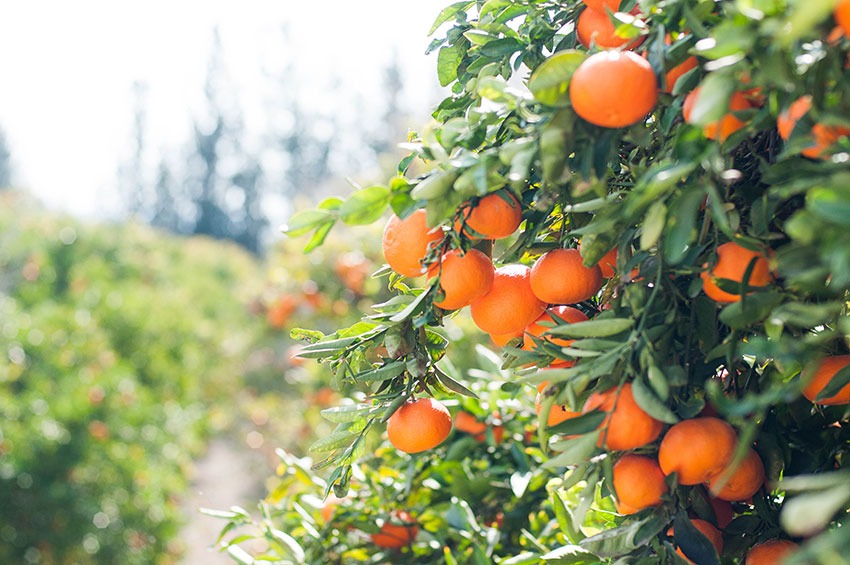Upcoming winter months are ideal for planting bareroot trees in warmer climates and the advice for planting bare root trees has changed.
by John Bagnasco
Colorado State University studied root growth in fruit trees and they have a planting technique that expands root growth exponentially.
No more deep holes; the new method calls for a shallow, saucer-shaped hole that is three times as wide as the tree roots and deep enough to allow planting at the same depth the tree was in the field (Note the change in color on the trunk).
These standards have been adopted industry wide, including endorsement by the American Nursery and Landscape Association (ANLA) and American Society of Consulting Arborists (ASCA).
Colorado State also warns against mulching around the base of the new tree: With newly planted trees, do NOT place mulch directly over the root ball. Rather, mulch the backfill area and beyond. Never place mulch up against the trunk as this may lead to bark decay. Over the backfill area and beyond, 3-4 inches of wood chip mulch gives better weed control and prevents additional soil compaction from foot traffic.
Planting Steps For Barefoot Trees
- Make sure the roots are evenly distributed. Prune the top of the tree to keep it in balance with the roots and give it a nice form to build on. Good form is key to a strong tree. Prune bare-root trees to three or four branches to establish the basic scaffolding.
- Bare-root trees need to be planted quickly. The hole should be no deeper than the root system, but at least twice as wide. Save the removed soil because it needs to go back in the hole. It’s not necessary to try to improve the soil with amendments, such as compost. Roots have a tendency not to venture out from the fluffy amended soil and the tree can become root-bound, he said. Filling a hole with amended soil also can create drainage problems. Water tends to stay in the amended area. If roots get waterlogged, the tree will die.
- Snip off any broken roots, then put the tree in a bucket of water for at least two hours or overnight. Plant the tree so that the root flare (where the roots meet the trunk) is at ground level or slightly higher soil to rest the tree on. Spread the roots over and get the tree to the right height.
- After filling in the planting hole, tap the surface with the back end of the shovel to settle and firm the soil. Make a basin, about 3 feet in diameter around the tree to help with watering.

